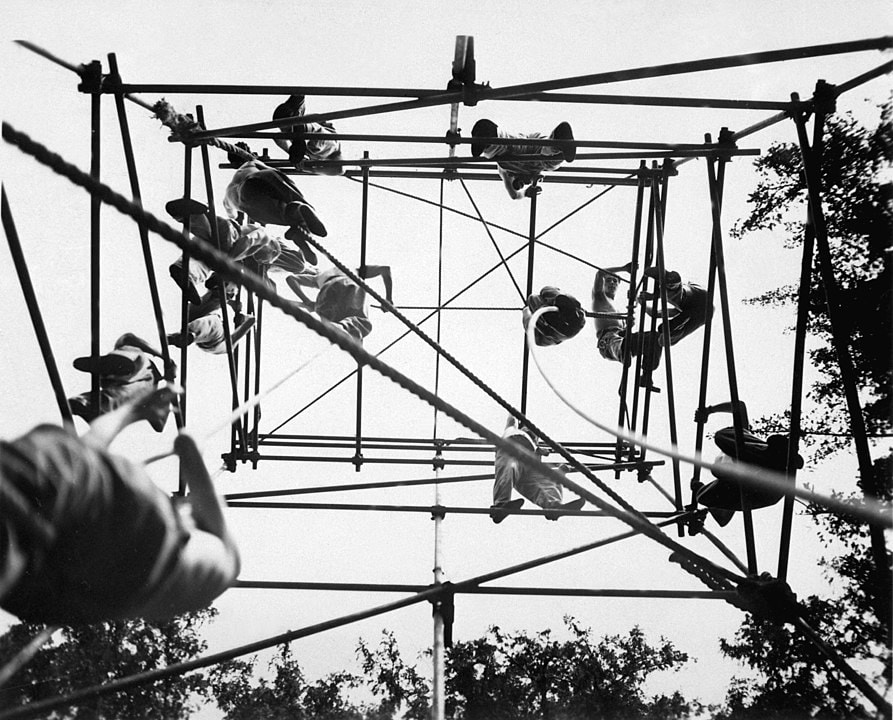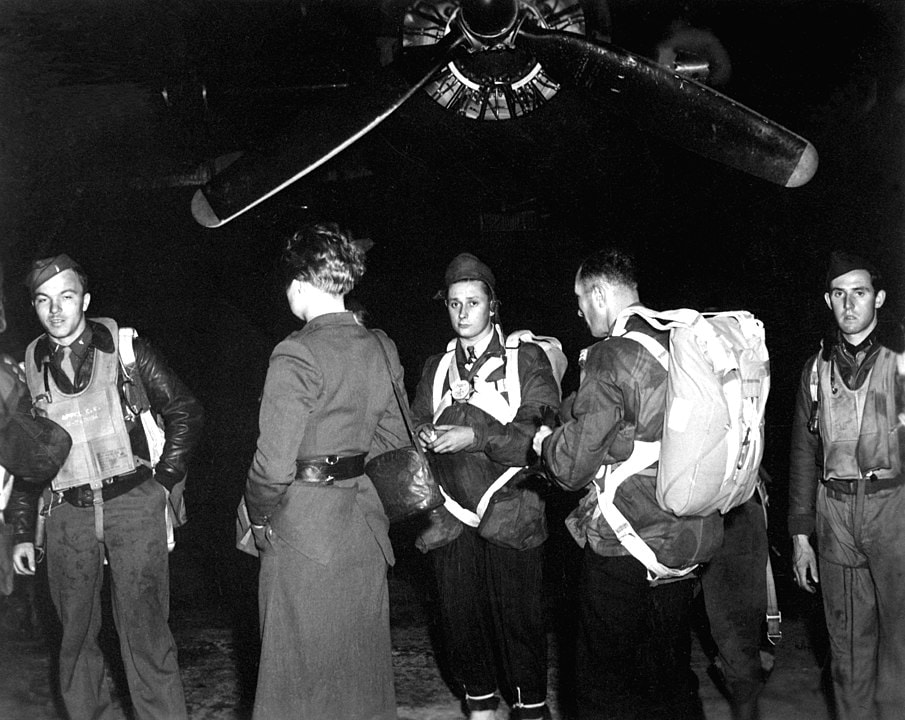Jedburgh Teams are a World War II-era military unit and case study for the successful integration of special operations forces (SOF) and conventional forces (CF).
The Second Great War institutionalised intelligence and special operations. That era’s creation of the United States Office of Strategic Services (OSS) and Britain’s Special Operations Executive (SEO) set conditions for the organizations, agencies, and task forces to come.
Although they lived in relative obscurity, compared to other WWII units, the Jedburgh teams are an instrumental example of utilising special forces operations in a conventional war.
A dangerous mission
“Wanted: Volunteers for immediate overseas assignment. Knowledge of French or another European language preferred; Willingness and ability to qualify as a parachutist necessary; Likelihood of a dangerous mission guaranteed.”
Men who heard that call, and answered, couldn’t have known the impact they would have on the historical record of WWII [source].
Nor would they know how the operations they conducted would be an early prototype for contemporary special operations.
Background context: the Third Reich was having a diabolically good time until 1943. France, the Netherlands, and Belgium fell into Nazi occupation as Hitler rose in power. The alarming speed and intensity with which the Germans conquered the European continent were hair-raising to the West.
When a threat reaches a certain level, the state must address it. The tremendous tactical minds in London and Washington D.C. converged – a plan to defeat the Nazi conquest of Europe became the central operational focus.
The OSS and SEO drafted a unique plan to fight the Nazis within occupied territory. Not with Allied conventional forces, but with a hybrid and more unconventional set of tactics that required a special breed of human to perform.
“Likelihood of a dangerous mission guaranteed” is a concise way of framing the Jedburgh team missions. It makes sense why the recruiting personnel wanted anyone interested to understand the unique risk beforehand.
It’s one thing to volunteer for a conventional total war – It’s another to volunteer for the Jedburgh mission.
The Jedburgh team pipeline
“Surprise, kill, and vanish”
-Team motto
Jedburgh teams were a joint effort between the OSS and SEO. The program started prior to D-Day, on the 6th of June 1944. Volunteers needed to be of high calibre – speaking French was a hallmark skill, along with physical fitness, tactical prowess, an intelligent mind, and the ability to work independently with minimal support.
The teams performed the role of “liaison” between guerilla fighters in occupied territory and Allied forces. They fulfilled that role by operating in two-to-four-man teams (typically three), aerial insertions into enemy territory, rendezvous with guerillas, and establishing communications with higher command.
The training pipeline started in the United States and ended in Great Britain and Scotland, where Jedburgh personnel would then stage and await their deployment to operations in the European theatre.
A typical Jedburgh team skill-set included:
- Radio proficiency
- Sabotage
- Foreign espionage
- Hand-to-hand combat
- Demolition
- Combat parachuting
- Mountain climbing
- Combat skiing
- French language proficiency
- Land navigation
- Amphibious operations
- Small arms proficiency
Jedburgh team training has drastic similarities to the pipelines in modern special operations units. They trained in various settings to prepare for their mission’s rigorous and unique demands. Like in today’s forces, few can do it. The organisational structure of the teams was not random [source]. Each had a radio operator, usually enlisted, and two officers. One team member hailed from the country of assigned operation (if they had a mission in France, there was at least one Frenchman on the team).

Vive la résistance!
Two moons before D-Day was the first Jedburgh team deployment in history.
The mission: help secure a bridgehead, disable Axis communication systems, and disable a key railway that could transport enemy troops and supplies to the war front. [source]
D-Day began team operations in France, with scores of Jedburghs parachuting in and assisting local resistance fighters. In the following months, Jedburgh teams would be a potent unconventional force throughout the European theatre.
French Maquisards, “The Marquis,” were one of the earliest customers. Named after underbrush that was common along the Mediterranean coastline, Marquis fighters were the idyllic non-conventional force to resist the Nazis.
They camped in the forests and mountains in southern France, such as the Alps and Brittany region. In guerilla fashion, The Marquis would do hit-and-runs on the Germans, along with sabotage and espionage operations.
Jedburgh teams received orders to help the Marquis. Upon making contact they would establish communications between the Marquis and Allied command. This opened new connections for the French fighters and gave Allied commanders unique intelligence on Nazi activity.
Other support included weapons, ammunition, and training, just like the mission of modern US Green Berets.
Throughout the war, Allied command would deploy Jedburghs to France, Belgium, and the Netherlands, which included participation in Operation Market Garden.

Marrying the conventional with the unconventional
Jedburgh teams are a primitive example of special operations being meshed with conventional warfare forces. Combining the two is an arduous task in the modern armed forces, but the Jedburghs are a worthy example to analyze.
According to US Colonel Kevin D. Stringer, there are four obstacles that obscure proper “SOF-CF integration” [source]:
- Doctrine and policy do not comprehensively define how SOF-CF integration should occur.
- The definitive concept of SOF-CF synchronization rigidly focuses on combat missions and cannot account for operational fluidity between unconventional, conventional, or humanitarian scenarios.
- There is a lack of mutual understanding between SOF and CF, creating a sense of SOF “otherness vis-à-vis the conventional forces from which the personnel were originally drawn.”
- The actual implementation of SOF-CF integration has often led to ad hoc organizational arrangements or mechanisms, both in training and wartime.
Stringer argues that the Jedburgh teams are a worthy example of successful SOF-CF integration, with three lessons to learn from:
- SOF team members must have superb language expertise and cultural acumen to blend into the local population of highly sophisticated and repressive occupiers (such as Russia, or China).
- SOF liaison teams must educate conventional force commanders on resistance force capabilities and the requirements to attain the integration.
- CF commanders must understand SOF activities and missions and carry a willingness to trust the SOF liaison element to operate in his or her interest with resistance forces.
Those lessons derive from Jedburgh team operations. Each team’s language and cultural skills were an enormous factor in their operational success. Not all CF commanders resonated with them, but there was a benefit for the ones that did.
SOF-CF integration is a complex doctrinal topic best approached by qualified brass and academics. It is worth noting how resilient tactics and strategy can be as war fighting evolves in tandem with society and technology. Jedburgh teams surprised, killed, and vanished themselves into the historical record, yet remain a force worthy of case study for contemporary SOF and CF forces.

